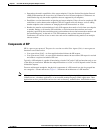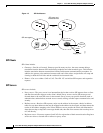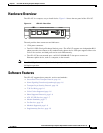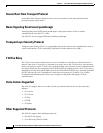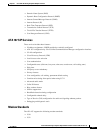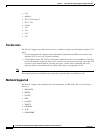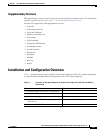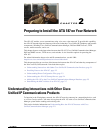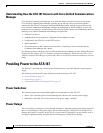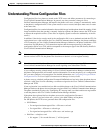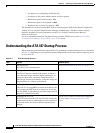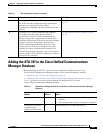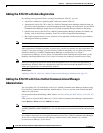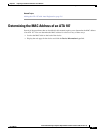
CHAPTER
2-1
Cisco ATA 187 Analog Telephone Adaptor Administration Guide for SIP (Version 1.0)
OL-21862-01
2
Preparing to Install the ATA 187 on Your Network
The ATA 187 enables you to communicate using voice over a data network. To provide this capability,
the ATA 187 depends upon and interacts with several other key Cisco Unified
IP Telephony and network
components, including Cisco
Unified Communications Manager, DNS and DHCP servers, TFTP
servers, media resources, and so on.
This chapter focuses on the interactions between the ATA 187, Cisco Unified Communications Manager,
DNS and DHCP servers, TFTP servers, and switches. It also describes options for powering the
ATA
187.
For related information about voice and IP communications, see this URL:
http://www.cisco.com/en/US/products/sw/voicesw/index.html
This chapter provides an overview of the interaction between the ATA 187 and other key components of
the Voice over IP (VoIP) network. It includes these topics:
• Understanding Interactions with Other Cisco Unified IP Communications Products, page 2-1
• Providing Power to the ATA 187, page 2-2
• Understanding Phone Configuration Files, page 2-3
• Understanding the ATA 187 Startup Process, page 2-4
• Adding the ATA 187 to the Cisco Unified Communications Manager Database, page 2-5
• Determining the MAC Address of an ATA 187, page 2-7
Understanding Interactions with Other Cisco
Unified
IP Communications Products
To function in the IP telephony network, the ATA 187 must be connected to a networking device, such
as a Cisco Catalyst switch. You must also register the ATA 187 with a Cisco
Unified Communications
Manager system before sending and receiving calls.
This section includes information on Understanding How the ATA 187 Interacts with Cisco
Unified Communications Manager, page 2-2.



